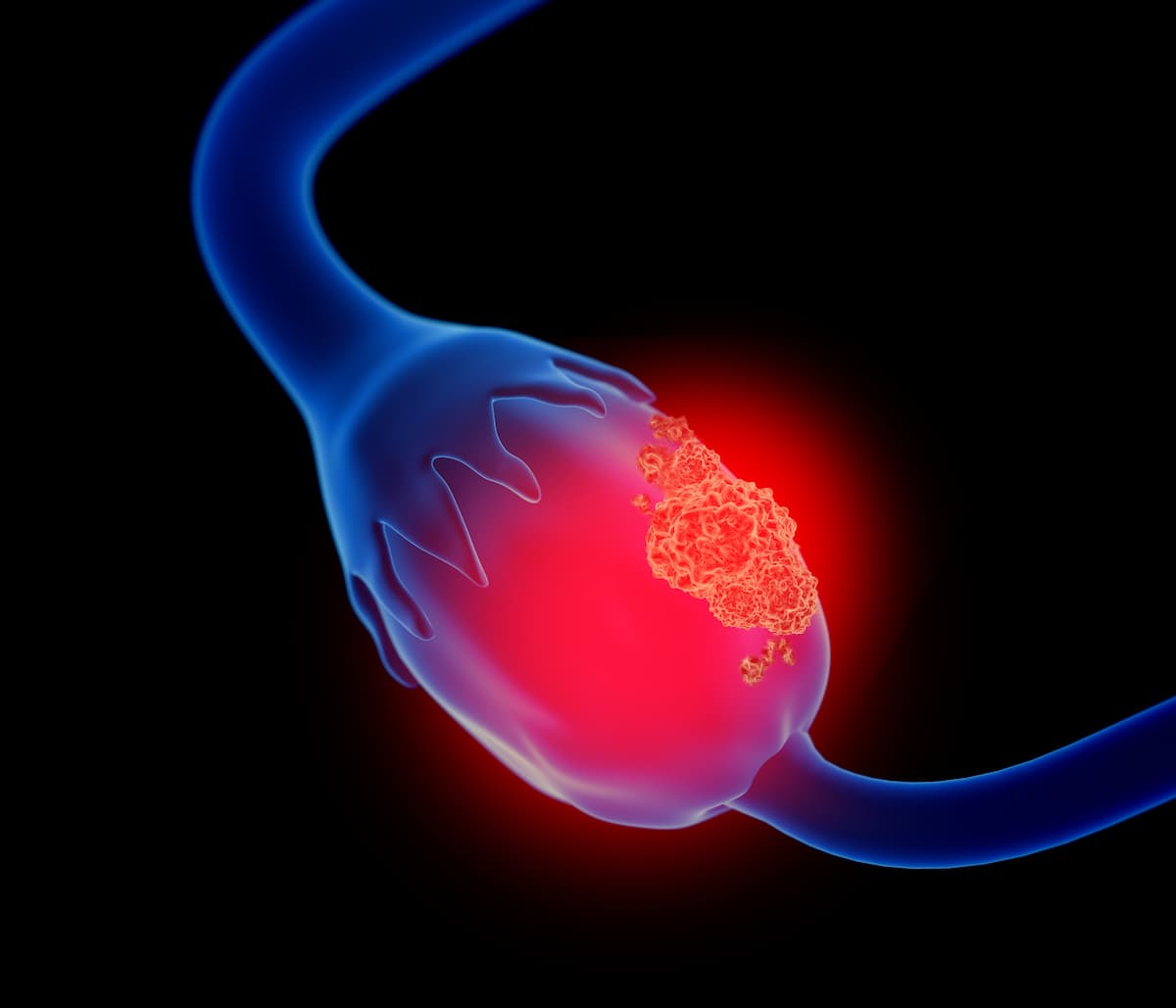Niraparib Yields Meaningful PFS Increase in Advanced Ovarian Cancer
The antitumor activity of niraparib maintenance therapy in patients with advanced ovarian cancer remains unclear among those with measurable residual disease at baseline in the phase 3 PRIME study.
“In patients with newly diagnosed advanced ovarian cancer who had measurable residual disease after [first-line platinum-based chemotherapy], niraparib maintenance therapy tended to induce additional antitumor activity and led to a clinically meaningful increase in PFS [progression-free survival] vs placebo and those who achieved further response during maintenance treatment appeared to have longer PFS,” the study authors wrote.

Niraparib (Zejula) produced antitumor activity in patients with newly diagnosed advanced ovarian cancer harboring measurable residual disease following platinum-based chemotherapy, according to findings from a post hoc subgroup analysis of the phase 3 PRIME study (NCT03709316) presented at the 2023 American Society of Clinical Oncology (ASCO) Annual Meeting.
“In patients with newly diagnosed advanced ovarian cancer who had measurable residual disease after [first-line platinum-based chemotherapy], niraparib maintenance therapy tended to induce additional antitumor activity and led to a clinically meaningful increase in PFS [progression-free survival] vs placebo and those who achieved further response during maintenance treatment appeared to have longer PFS,” the study authors wrote.
Post Hoc Analysis
The post hoc analysis reported on blind independent central review (BICR)-assessed objective response rate (ORR) and PFS during maintenance treatment in patients with measurable residual disease at baseline, with an initial response being confirmed at 4 or more weeks.
In total, 47 patients in the niraparib arm and 26 in the placebo arm had measurable disease at baseline (19.0%).
Complete (CR) and partial response (PR) were observed during maintenance treatment among 12 (25.5%) and 15 (31.9%) patients, respectively, in the niraparib arm compared with 3 (11.5%) and 5 (19.2%) patients in the placebo arm. The ORR was 57.4% with niraparib, vs 30.8% with placebo (odds ratio, 3.2; 95% CI, 1.11-9.11). Of note, the higher ORR was still observed with niraparib, regardless of biomarker status, the authors wrote.
In addition, median PFS was superior with niraparib vs placebo (22.3 months [95% CI, 8.7–not estimable] vs 8.3 months [95% CI, 5.6-11.0]; HR, 0.36; 95% CI, 0.19-0.71).
Lastly, grade 3 or higher treatment-emergent adverse events (TEAEs) occurred in 28 patients (59.6%) in the niraparib group and 7 patients (26.9%) in the placebo group. TEAEs led to treatment discontinuation in 3 patients (6.4%) treated with niraparib, compared with 1 patient (3.8%) given placebo.
The most common grade 3 or higher TEAEs in the niraparib and placebo arms were platelet count decreased (19.1% vs 0%, respectively), anemia (14.9% vs 0%), neutrophil count decreased (14.9% vs 0%), hypertension (8.5% vs 0%), gamma-glutamyl transferase increased (6.4% vs 3.8%), and white blood cell count decreased (6.4% vs 0%).
PRIME Study Background
In the randomized, double-blind, placebo-controlled phase 3 trial, investigators aimed to evaluate the efficacy and safety of niraparib maintenance therapy in Chinese patients with newly diagnosed, advanced ovarian cancer who responded to first-line platinum-based therapy.
In the trial, maintenance therapy with niraparib demonstrated a statistically significant and clinically meaningful improvement in PFS (median, 24.8 months vs 8.3 months, respectively; HR, 0.45; 95% CI, 0.34-0.60; P < .001) compared with placebo. PFS benefit was seen regardless of biomarker status and residual disease status after surgery.
“However, the antitumor activity of niraparib maintenance therapy in patients with measurable residual disease at baseline remains unclear,” the study authors wrote.
The investigators randomized 384 patients 2:1 to receive either niraparib or matched placebo for 36 months or until disease progression or unacceptable toxicity.
To be eligible for the trial, patients were required to be 18 years of age or older, and have FIGO stage III/IV ovarian cancer, high-grade serous or endometroid tumor, receipt of primary or interval cytoreductive surgery, and a CR or PR to first-line platinum-based therapy.
Data cutoff for the current analysis was September 30, 2021.
BICR-assessed PFS in the intent-to-treat (ITT) population served as the primary end point. Secondary end points included overall survival (OS) and time to first subsequent anti-cancer therapy in the ITT population, PFS and OS in the homologous recombination deficiency (HRD) subgroup, and safety.
Patients were stratified by germline BRCA mutation status, tumor HRD status, receipt of neoadjuvant chemotherapy, and response to first-line platinum-based therapy.
In the niraparib arm, median age was 55 years (range, 39-77), and the majority of patients had an ECOG performance status of 1 (68.1%) and FIGO stage III disease (68.1%). Further, 24 patients (51.1%) had received neoadjuvant therapy, 34 patients did not have a BRCA mutation (72.3%), 31 had HRD status (66.0%), 37 had an optimal outcome to cytoreductive surgery (78.7%), and 34 had a CR to first-line platinum-based therapy (72.3%).
Reference
Kong B, Wu L, Zhu J, et al. Efficacy and safety of niraparib maintenance therapy in patients with newly diagnosed advanced ovarian cancer who had measurable residual disease: A post-hoc subgroup analysis of the PRIME study. J Clin Oncol. 2023;41(16):5562.